NFC Evaluation in the Development of Mobile Applications for MICE in Tourism
Abstract
:1. Introduction
2. Theoretical Background
2.1. Event Tourism (MICE)
2.2. Near Field Communication NFC
2.3. Android
3. Research Methodology
3.1. Symbols Used in Research Methodology
- Keywords were selected, then with those keywords, research was made based on the titles, fields of study, and app specifications.
- Based on the application search, we analyzed the most relevant characteristics of each one, extracting from the application group the frequency of each characteristic and its importance.
- With the essential features obtained, we performed an analysis of the relevance for each actor (attendees, managers, speakers, business people, press).
- After the analysis, the most important features for our application were found, dividing it into two important parts—one for organizers and another for attendees.
3.2. Applications Search
3.3. Evaluation of Possible Functionalities, Requirements, and Characteristics
3.4. Application Characterization
3.4.1. Group by Speakers
3.4.2. Group by Attendees
3.4.3. Group by Press
3.4.4. Group by Event Managers
3.4.5. Group by Business People
3.5. Definition of Requirements, Functionalities, and Characteristics
- Main screen where the general information for the event is located (objective, date, location)
- Display of the list of speakers where you will find the most relevant information of each one of them.
- Schedule of each of the days of the event where you will find the most pertinent information on the presentations and schedules.
- Location where the places of interest are, using GPS location.
- Reception of notifications sent by the managers.
- The main screen where you choose the activity to register the users with the NFC tags.
- Write NFC tags with the users’ information.
- Create profiles for attendees.
- Send notifications to the attendees’ application.
- Attendee data (number of people who went to activities).
- Add bookmarks to the application map
- Modification of the different aspects of the application such as speakers, timetable, and activities.
4. Methods and Design
4.1. Symbols Used in Methods and Design
4.1.1. Architecture
- The management’s app writes the NFC tag with the user info (name, cell phone number, and email).
- The management’s app reads the NFC tag and extracts the data elements (RNu, RTu, REu)
- After reading the NFC tag, the management’s app sends the user information to the server and registers it in the database.
- The users’ app downloads the event information given to the server, and the description of data in the IEP (Info Event Program) is detailed as follows:
- (a)
- Edk= EHk || ENk ||ETk || ESk || ECk ||ELk
- (b)
- Sdk= SNk || SSk ||SXk || SFk || SHkwhere the app takes the scheduling information, speakers, object, and other things relevant to the event, and provides some notification to the user, helping them to optimize their use of the information .
- An important part of the user application is the GPS location using the Google API; the app communicates with a Google server, first sending the authentication ID and then downloading the data, giving the user the option of navigating through the maps and points of interest.
- The server puts the general system information in the database to generate a backup with all user registrations and assistant controls.
- The database gives the server the event registration information and also forwards it to the attendees in order to allow them to monitor and update the information.
- The server communicates with the FireBase to send notifications, and the management can send notifications to generate interest and give relevant information to organize the attendees.
- The user’s app has an internal backup so that the attendee does not require an internet connection to use it.
4.2. ID Smart Design
5. Mobile Application
5.1. Attendee Application
5.2. Management Application
5.3. Web Application
5.4. Data Base
6. Case Study
6.1. Test Performance in a MICE Event
6.1.1. Description of the Selected Place
- Stalls for 281 people
- First floor 124 people
- Second floor 112 people
- Third floor 140 people
- Fourth floor 140 people
6.1.2. Preparing the Experience
6.1.3. Operation of the System
6.1.4. Survey
7. Discussion
- Using other technologies in the development of the service, a good option may be the use of beacons, since they would improve the interaction of the attendees when using the service for indoor locations, when the physical site of the event is very extensive and has several pavilions. The beacons could help the user to locate and navigate easily, and a notifications option could be added, where the beacon would generate an alert when a user walks near a pavilion. This is a good option for a moderate cost and would greatly improve the interaction of the attendees and facilitate the work of the organizers.
- The performance of the service should be evaluated on a larger scale, implementing it in a big event with international reach that has physical space for its extensive development and several pavilions, to evaluate different factors and the feasibility of the service.
8. Conclusions
- The combination of NFC and mobile applications for the development of tourism in the MICE category shows a high level of acceptance by the participating public which allows us to conclude that events carried out with this type of technology will be improved by the logistics that are implemented.
- Many of the applications focus on the attendees without considering the other important players such as business people, organizers, press, and exhibitors.
- Approximately 41% of attendees used the application for this event (“TET 2016”).
- NFC tags allow organizers to have greater agility for making records of the attendants; this is because they are able to read the data faster with the application than in the standard way.
- During the three days, the number of application users increased, and the users had access to functions such as location GPS, notifications sent by the organizer, and schedule changes.
- The attendees who have the application are always up-to-date with the schedule changes.
- The NFC tags are very resistant to different factors such as weather, dust, cold, and heat.
Author Contributions
Conflicts of Interest
References
- Statista. Smartphone Users Worldwide 2014–2020; Statista: Hamburg, Germany, 2017. [Google Scholar]
- Shota, N.; Michitoshi, N.; Erjing, Z. Student Attendance Management System with Bluetooth Low Energy Beacon and Androir Devices. In Proceedings of the International Conference on Network-Based Information Systems, Taipei, Taiwan, 2–4 September 2015. [Google Scholar]
- Baldo, D.; Benelli, G.; Pozzebon, A. The SIESTA project: Near Field Communication bases applications for tourism. In Proceedings of the 2010 7th International Symposium on Communication Systems Networks and Digital Signal Processing (CSNDSP), Newcastle upon Tyne, UK, 21–23 July 2010. [Google Scholar]
- Araki, H.; Kim, J.; Zhang, S. Materials and Device Designs for an Epidermal UV Colorimetric Dosimeter with Near Field Communication Capabilities. Adv. Funct. Mater. 2017, 27. [Google Scholar] [CrossRef]
- Kirkup, J.A.; Rowlands, D.D.; Thiel, D.V. Team Player Tracking using Sensors and Signal Strength for Indoor Basketball. IEEE Sens. J. 2016, 16, 4622–4630. [Google Scholar] [CrossRef]
- Vedat, C.; Busra, O.; Kerem, O. A Survey on Near Fiel Comunnications (NFC) Technology; Springer Science + Business Media: Dordrecht, The Netherlands, 2012. [Google Scholar]
- Egger, R. The impact of Near Field Communication on Tourism. J. Hosp. Tour. 2013, 4, 119–133. [Google Scholar] [CrossRef]
- El-kassas, W.; Solyman, A.; Faro, M. mTourism Multilingual Integrated Solution: A case Study “Egypt Travel”. In Proceedings of the eChallenges e-2014 Conference, Belfast, UK, 29–30 October 2014. [Google Scholar]
- Shafiee, S.; Rajabzadeh Ghatari, A. Big Data in Tourism Industry. In Proceedings of the International Conference on e-Commerce with Focus on e-Tourism, Isfahan, Iran, 15–16 April 2016. [Google Scholar]
- Senthill, V. A study of social media applications in Indian Tourism. In Proceedings of the 3rd International Conference on Computing for Sustainable Global Development, New Delhi, India, 16–18 March 2016. [Google Scholar]
- Karouw, S.; Wowor, H. Designing minahasa toulour 3D animation movie as part of Indonesian e-Cultural Heritage and Natural History. In Proceedings of the 2014 International Conference on Advanced Computer Science and Information Systems, Jakarta, Indonesia, 18–19 October 2014. [Google Scholar]
- Getz, D. Event Tourism: Definition, Evolution and Research. Tour. Manag. 2008, 29, 403–428. [Google Scholar] [CrossRef]
- ProColombia. Turismo de Reuniones en Colombia. Available online: http://www.procolombia.co/actualidad/colombia-sube-en-escalafon-mundial-de-turismo-de-reuniones (accessed on 22 August 2017).
- Figueroa, A. Travel Definitions: What is MICE? Available online: http://tourism.about.com (accessed on 16 September 2017).
- Archive.org. The Android Source Code. Available online: https://source.android.com/source/ (accessed on 16 September 2017).
- Expandedramblings.com. Android Statistics. Available online: https://expandedramblings.com/index.php/android-statistics/#.WeVrqGjWzIU (accessed on 16 September 2017).
- Gartner. Gartner Says Worldwide Sales of Smartphones Grew 7 Percent in the Fourth Quarter of 2016. Available online: https://www.gartner.com/newsroom/id/3609817 (accessed on 16 September 2017).
- Support_google. Place an Order at the Google Store. Available online: https://support.google.com/store/answer/6380409?co=GENIE.Platform%3DDesktop&hl=en (accessed on 17 September 2017).
- Php.net. What Is PHP? Available online: http://php.net/manual/en/intro-whatis.php (accessed on 20 September 2017).
- Colombia.travel. Popayan a Breathtaking City in Cauca-Pubenza Carnival. Available online: http://www.colombia.travel/en/where-to-go/pacific/popayan/activities/pubenza-carnival (accessed on 28 September 2017).
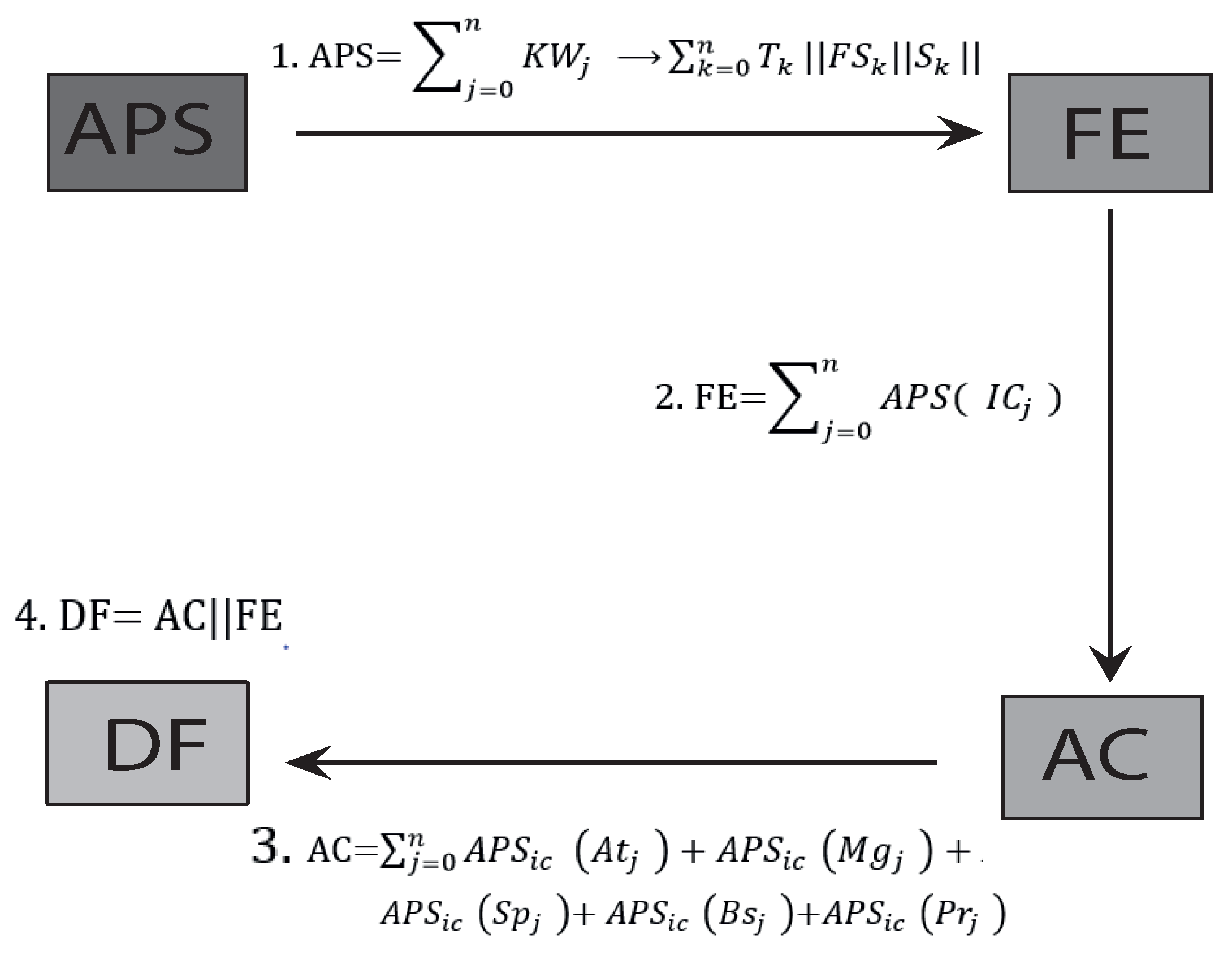

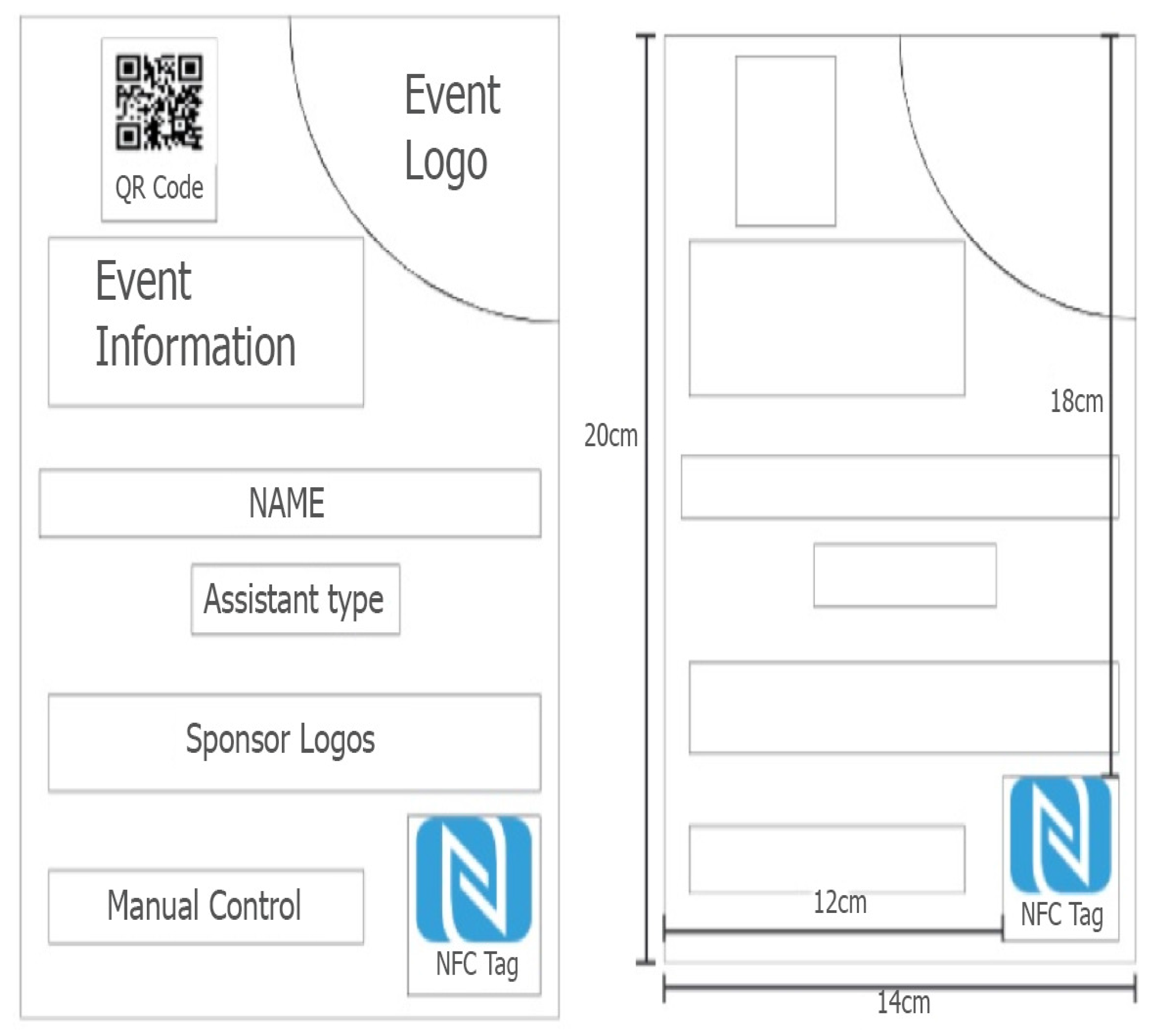
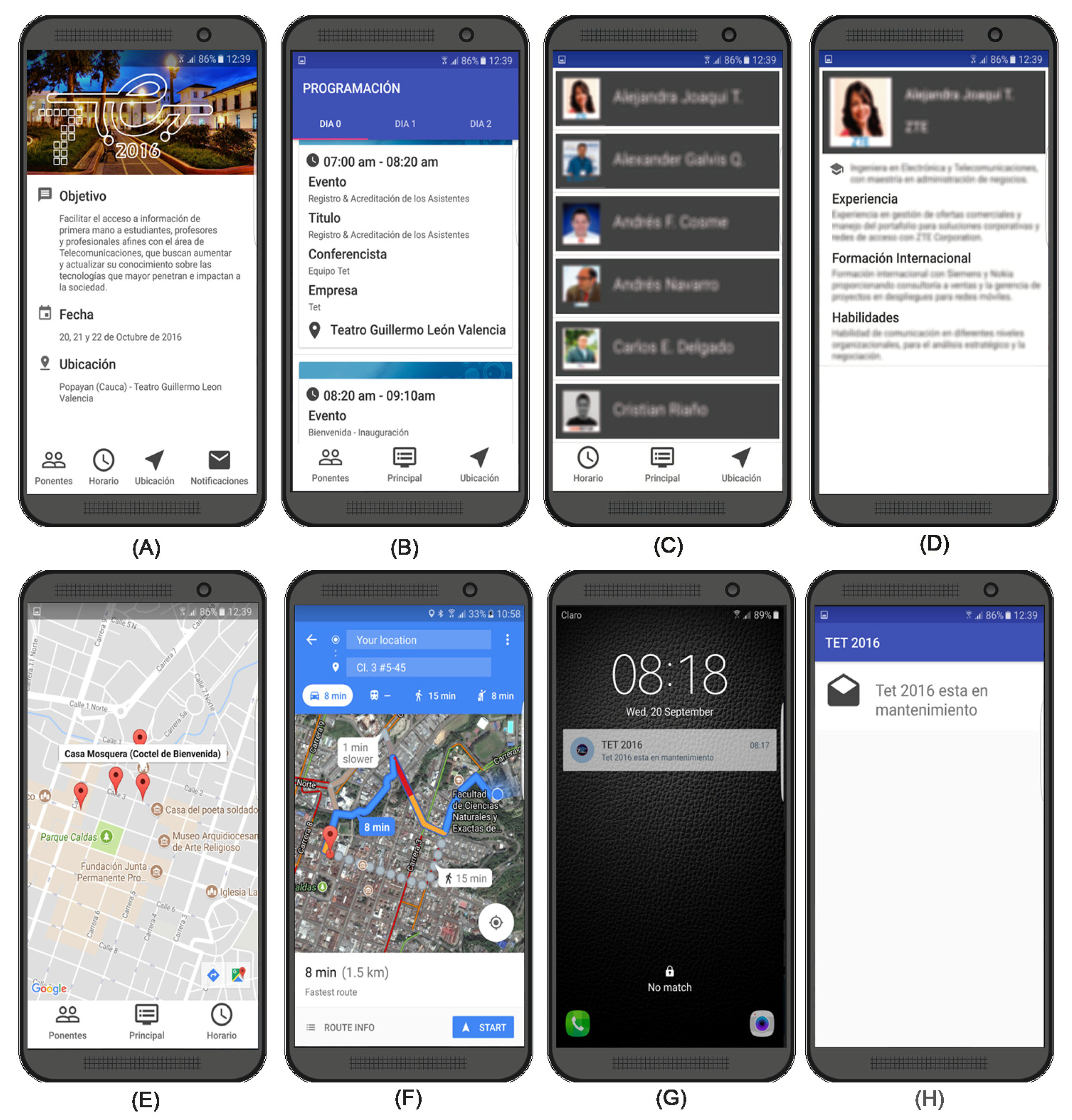

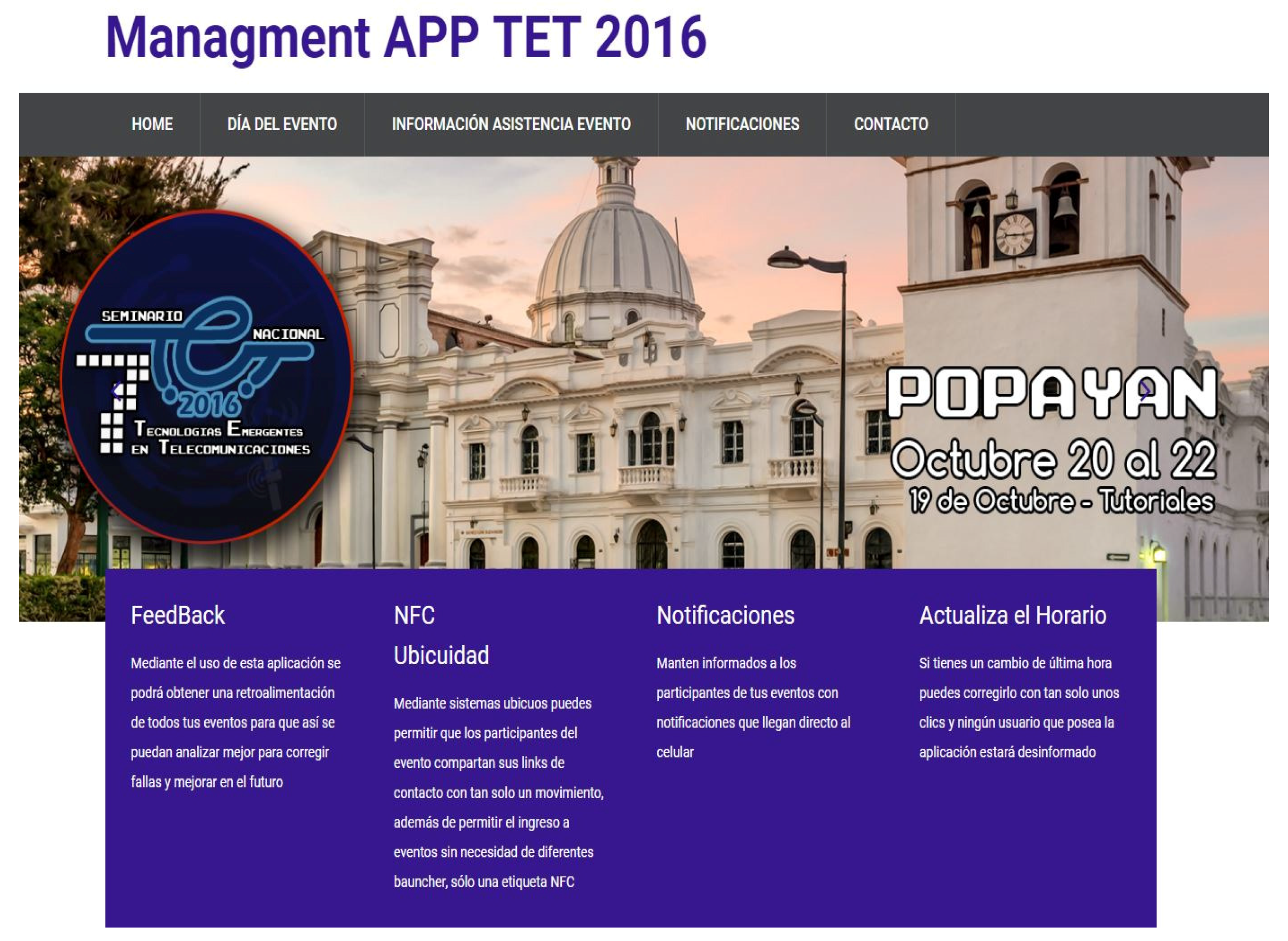
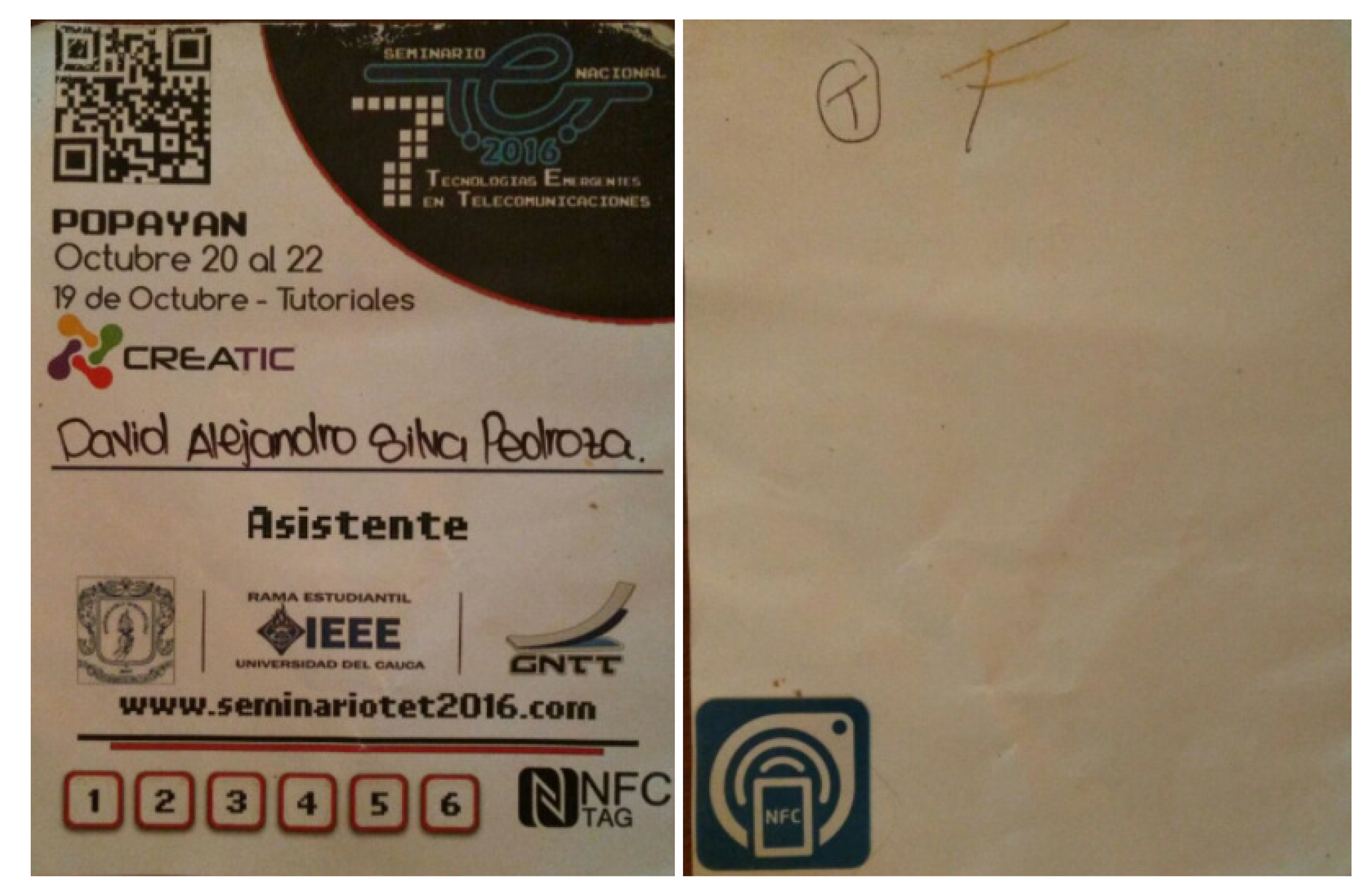
| Symbols | Description | Symbols | Description |
|---|---|---|---|
| APS | Application Search | AC | Application Characterization |
| Atj | Attendees | Bsj | Business People |
| FSk | Field of Study | FE | Functionalities Specifications |
| ICj | Important characteristics | KWj | Key Words |
| Mgj | Manager | Prj | Press |
| Sk | Specifications | Spj | Sponsor |
| Tk | Title | PABS | Percent of the number of Apps based on the group of Study |
| N | Applications | D/L | Rating | N | Applications | D/L | Rating |
|---|---|---|---|---|---|---|---|
| 1 | WMT Events | 0 | - - | 13 | IBM Conference App | 43 | 4.4 |
| 2 | Sysmex MICE | 100 | - - | 14 | Google I/O 2016 | 21,801 | 4.3 |
| 3 | MICE Chiang Mai | 100 | - - | 15 | TED Connect | 354 | 4.3 |
| 4 | EventMobi | 0 | - - | 16 | ASH annual Meeting | 34 | 4.2 |
| 5 | KOREA MICE EXPO 2015 | 100 | - - | 17 | Ginstr Events | 14 | 3.9 |
| 6 | Entre Manager | 788 | 4.8 | 18 | Event Guide | 10,000 | 3.8 |
| 7 | Townscript Event Manager | 4 | 4.8 | 19 | ACS Meeting Fall 2015 | 43 | 4.4 |
| 8 | Conferences Events Made Easy | 13 | 4.8 | 20 | Ross | dd’s | 10,000 | 3.3 |
| 9 | Whova | 676 | 4.6 | 21 | Grupio | 59 | 3.1 |
| 10 | ASSA Meeting | 26 | 4.6 | 22 | EventPilot Conference App | 59 | 3.1 |
| 11 | EventsAir | 1000 | 4.4 | 23 | IEEE PES General Meeting | 5 | 2.6 |
| 12 | ASCB Meeting | 14 | 4.4 | 24 | MWC Event App | 50,000 | 2.6 |
| Features | Number of Applications | PABS |
|---|---|---|
| Solve questions instantly | 3 | 12.5% |
| Review conference participants | 1 | 4.2% |
| Event map | 1 | 4.2% |
| Exclusive section for speakers | 0 | 0% |
| Show important items on the cell phones of attendees | 3 | 12.5% |
| Attendees can instantly answer questions made by the speakers | 1 | 4.2 % |
| Share slides or material with attendees | 2 | 8.3% |
| Create surveys | 3 | 12.5% |
| Receive phone calls | 1 | 4.2% |
| Features | Number of Applications | PABS | Features | Number of Applications | PABS |
|---|---|---|---|---|---|
| Attendance validation | 7 | 29.1% | Share user profile | 2 | 8.3% |
| Build and update an agenda for each user | 20 | 83.3% | Navigate through the attendants list | 7 | 29.1% |
| Access to the event agenda | 23 | 95.8% | Explore attendee profiles | 2 | 8.3% |
| Reminders before the start of the sessions | 6 | 25% | Phone call to the assistant | 1 | 4.2% |
| Get information about social events | 6 | 25% | Send an SMS to an assistant | 3 | 12.5% |
| Receive a notification when the event agenda changes | 16 | 66.6% | Navigate through speakers list | 12 | 50% |
| Organizer messages | 7 | 29.1% | Explore speaker profiles | 10 | 41.6% |
| Event map and GPS location | 16 | 66.6% | Call speakers | 1 | 4.2% |
| Places of interest locations | 2 | 8.3% | Send SMS to speakers | 1 | 4.2% |
| Social events locations | 2 | 8.3% | Find close attendees with the same interest | 2 | 8.3% |
| Native App without internet needed | 6 | 25% | List attendees with the same interest | 3 | 12.5% |
| Take notes of the presentations and e-mail it | 9 | 37.5% | Chat between attendees | 5 | 20.8% |
| Information about related conferences | 7 | 29.1% | Build a network between attendees with the same interes | 5 | 20.8% |
| Create a professional profile with the persons you share interests with | 5 | 20.8% | Watch the presentations and sessions live | 2 | 8.3% |
| Log in through Facebook or LinkedIn | 1 | 4.2% | Monitor publications and conversations on social networks related to the conference | 7 | 29.1% |
| See survey results | 1 | 4.2% | Make publications about the event (feeds) | 3 | 12.5% |
| Download content from the sessions at any time | 4 | 16.6% | Make real-time questions to speakers | 3 | 12.5% |
| News related to the event | 2 | 8.3% | Answer surveys in real-time | 4 | 16.6% |
| Chat with the app support | 1 | 4.2% | Chat with the event support | 0 | 0% |
| Recommendations about conferences in the same event | 1 | 83.3% |
| Features | Number of Applications | PABS |
|---|---|---|
| Real-time event news | 16 | 66.6% |
| Distinction of people for interviews | 0 | 0% |
| Event map | 0 | 0% |
| Exclusive section for press | 0 | 0% |
| Features | Number of Applications | PABS |
|---|---|---|
| Create, build, and modify the event agenda | 4 | 16.6% |
| Search attendees with a pre registration. | 6 | 25% |
| Register the entrance of the attendees | 8 | 33.3% |
| Register the exit of the attendees | 2 | 8.3% |
| Have sale statistics | 8 | 33.3% |
| Have attendance statistics | 7 | 29.1% |
| Monitor publications and conversations on social networks about the conference | 7 | 29.1% |
| Send SMS to the attendees | 7 | 29.1% |
| Make agenda updates | 12 | 50% |
| Chat with the application support | 0 | 0% |
| Chat with the speakers | 1 | 4.2% |
| Establish meeting place for sessions | 1 | 4.2% |
| GPS location that shows near important places | 1 | 4.2% |
| Characteristics | Number of Applications | PABS |
|---|---|---|
| Sales of your products according to customer | 0 | 0% |
| Product promotion using metadata | 0 | 0% |
| Show people in their same field | 0 | 0% |
| Exclusive section for business people | 0 | 0% |
| Show sales statistics | 0 | 0% |
| Publicity on the app | 2 | 8.3% |
| Symbols | Description | Symbols | Description |
|---|---|---|---|
| WT | Write Tag | RT | Read Tag |
| RUI | Register User Id | IEP’NUA | Info Event Program (Native user aplication) |
| IMD | Info Maps Data | IGR | Info General Requested |
| IN | Info Notifications | IEP | Info Event Program |
| RIR | Return Info Request | Nau | Name User |
| Teu | Telephone User | Emu | Email User |
| Rnu | Read Name User | Rtu | Read Telphone User |
| Reu | Read Email User | Udk | User Data |
| Edk | Event Data | Sdu | Speaker Data |
| OBe | Objective Event | DAe | Description Event |
| LOe | Location Event | MNs | Message Notification Event |
| ACm | Access Certification Maps | LPm | Location Point Maps |
| DUk | Data User | DEk | Data Event |
| NDk | Notification Data | DEs | Data Event Server |
| DPs | Data Participant Server | BMf | Broadcast Message FireBase |
| Column | Type | Description |
|---|---|---|
| Idp | int (11) | ID key for the data base |
| Id | varchar (20) | MAC of the NFC tag |
| varchar (100) | Email of the owner of the NFC tag | |
| Name | varchar (100) | Name of the owner of the NFC tag |
| Tel | int (11) | Telephone of the owner of the NFC tag |
| Type | int (3) | An entire number to define the kind of user (assistant, speaker, press, etc.) |
| Ide | int (4) | ID of the activity in which the user is participating |
| Column | Type | Description |
|---|---|---|
| Id | int (11) | ID key for the data base |
| Idd | int (11) | Id of the day on course |
| Ido | int (11) | Id of the activity at the day on course |
| Hour | varchar (10) | Hour of the activity |
| Event | varchar (100) | Description of the activity |
| Title | varchar (100) | Title of the activity |
| Speaker | varchar (100) | Name of the speaker |
| Company | varchar (100) | Company of the speaker |
| Place | varchar (100) | Place of the activity |
| Day | Notification Number | Hour | App Users | Type |
|---|---|---|---|---|
| Day 1 | Notification 1 | 13:45 | 31 | In |
| Day 1 | Notification 2 | 17:46 | 43 | Sc |
| Day 1 | Notification 3 | 20:17 | 56 | Re |
| Day 1 | Notification 4 | 13:45 | 58 | Ar |
| Day 2 | Notification 5 | 9:29 | 66 | In |
| Day 2 | Notification 6 | 11:51 | 68 | Sp |
| Day 2 | Notification 7 | 11:59 | 68 | Ar |
| Day 2 | Notification 8 | 17:18 | 73 | Ar |
| Day 2 | Notification 9 | 19:07 | 73 | Re |
| Day 2 | Notification 10 | 21:24 | 74 | Re |
| Day 3 | Notification 11 | 9:36 | 79 | Re |
| Day 3 | Notification 12 | 10:34 | 80 | Ln |
| Day 3 | Notification 13 | 13:09 | 81 | Ar |
| Day 3 | Notification 14 | 15:38 | 81 | Ar |
| Day 3 | Notification 15 | 15:48 | 81 | Re |
| Day 3 | Notification 16 | 19:55 | 80 | Re |
| Day 3 | Notification 17 | 20:34 | 79 | Re |
| Symbol | Definition |
|---|---|
| In | Information: General information about the event. |
| Sp | Sponsor: Message sent by a sponsor. |
| Ar | Attendees Re-organization: To group the attendees if required. |
| Re | Reminders: Send reminders if necessary |
© 2017 by the authors. Licensee MDPI, Basel, Switzerland. This article is an open access article distributed under the terms and conditions of the Creative Commons Attribution (CC BY) license (http://creativecommons.org/licenses/by/4.0/).
Share and Cite
Silva-Pedroza, D.; Marin-Calero, R.; Ramirez-Gonzalez, G. NFC Evaluation in the Development of Mobile Applications for MICE in Tourism. Sustainability 2017, 9, 1937. https://doi.org/10.3390/su9111937
Silva-Pedroza D, Marin-Calero R, Ramirez-Gonzalez G. NFC Evaluation in the Development of Mobile Applications for MICE in Tourism. Sustainability. 2017; 9(11):1937. https://doi.org/10.3390/su9111937
Chicago/Turabian StyleSilva-Pedroza, David, Ricardo Marin-Calero, and Gustavo Ramirez-Gonzalez. 2017. "NFC Evaluation in the Development of Mobile Applications for MICE in Tourism" Sustainability 9, no. 11: 1937. https://doi.org/10.3390/su9111937





